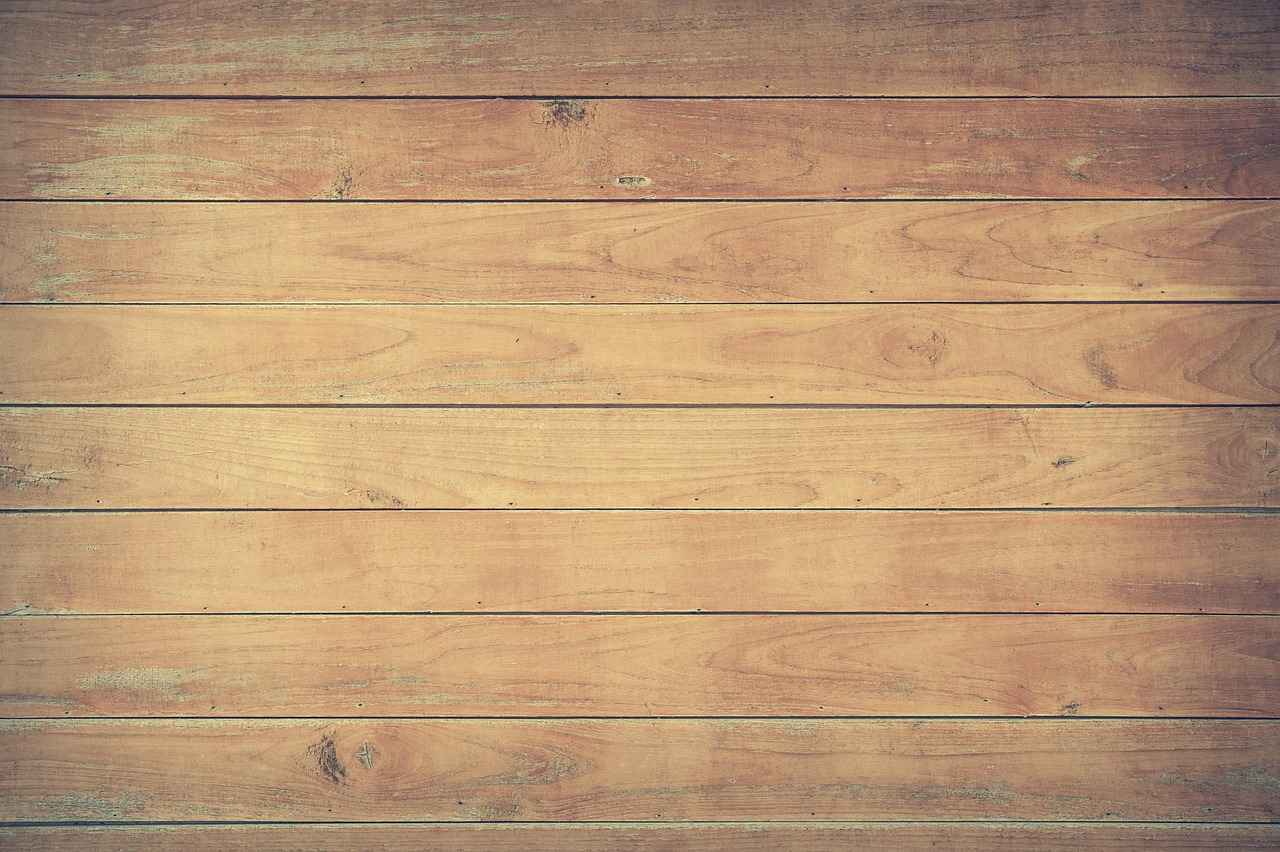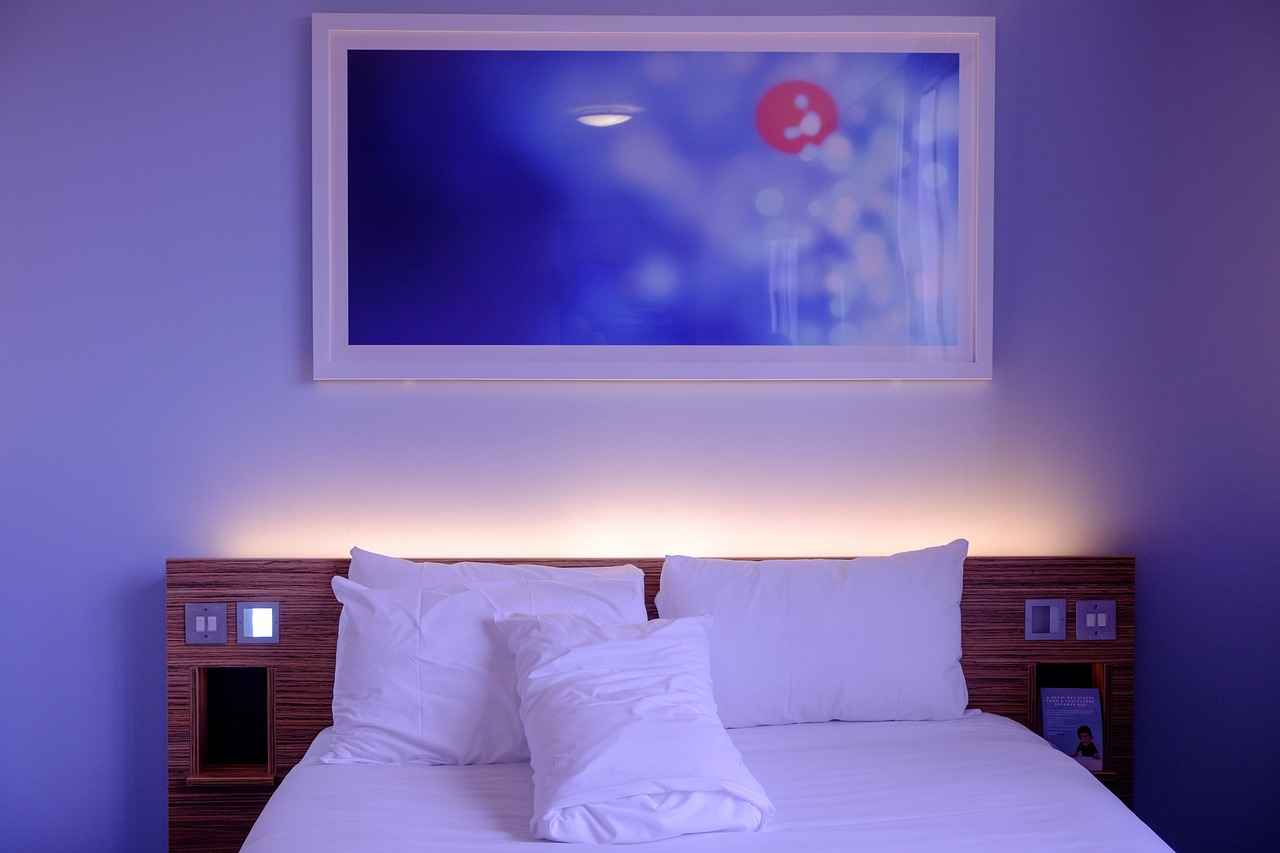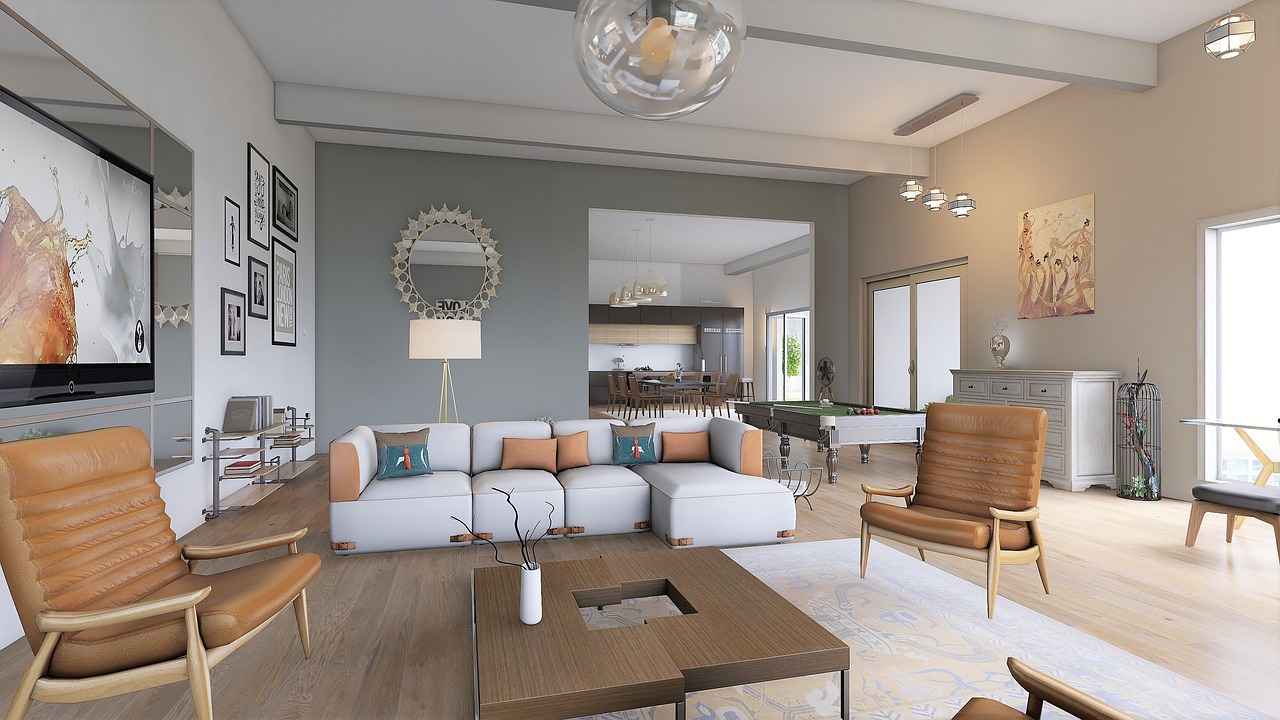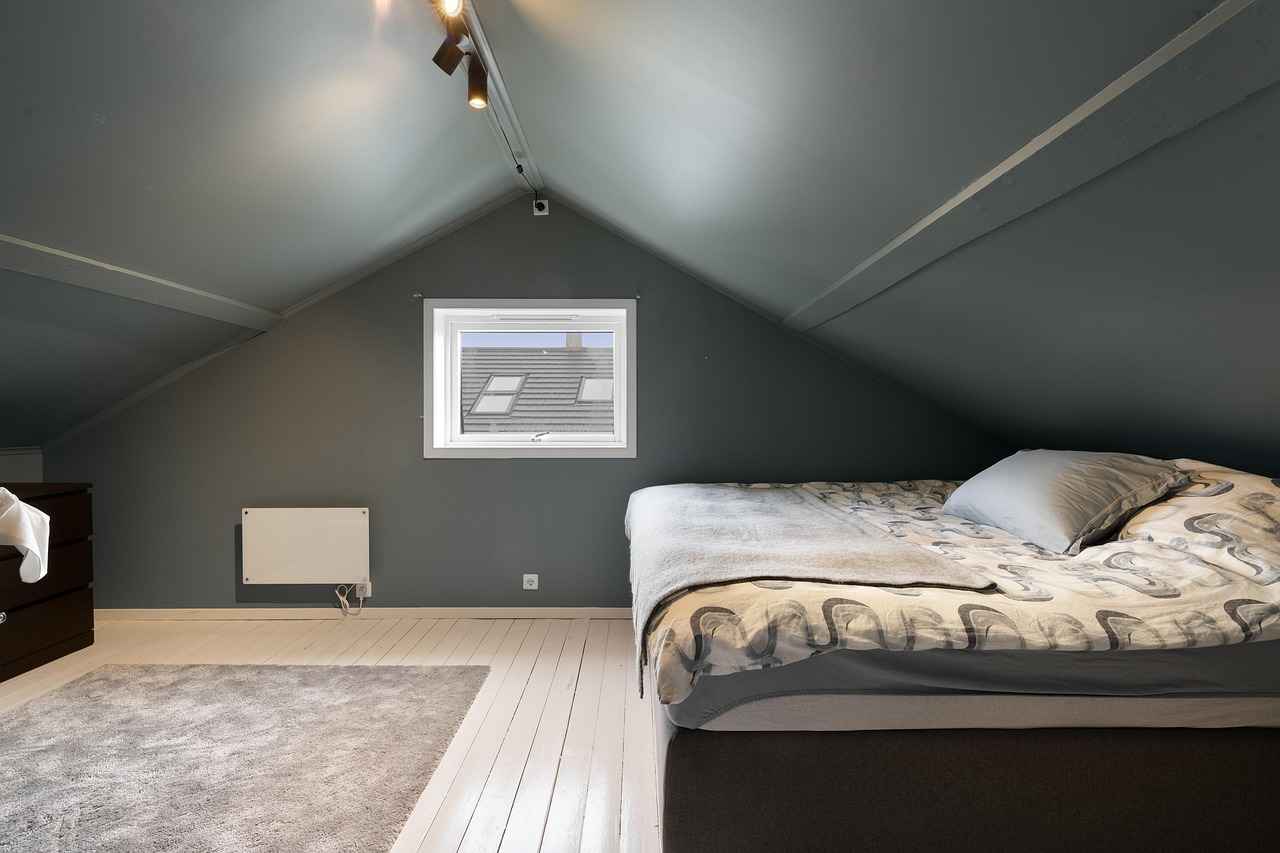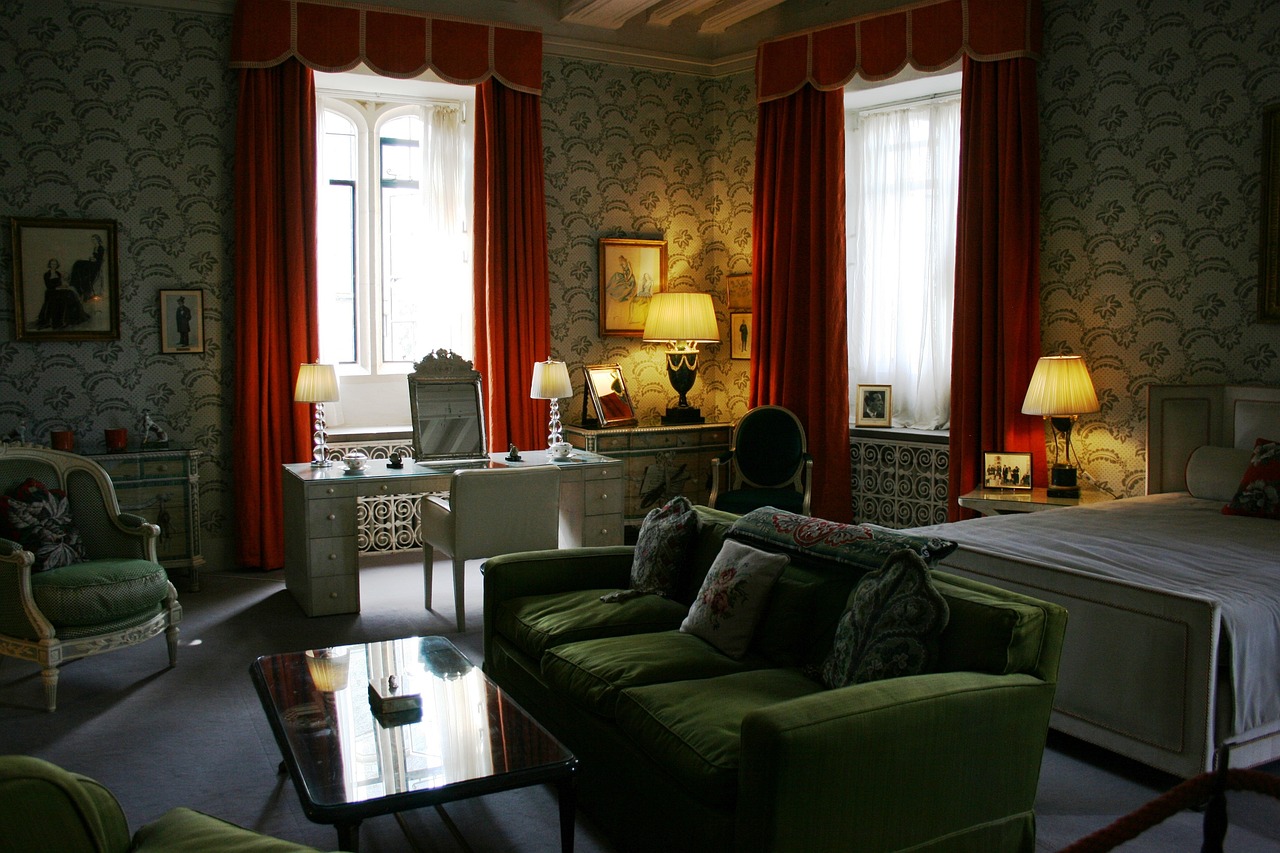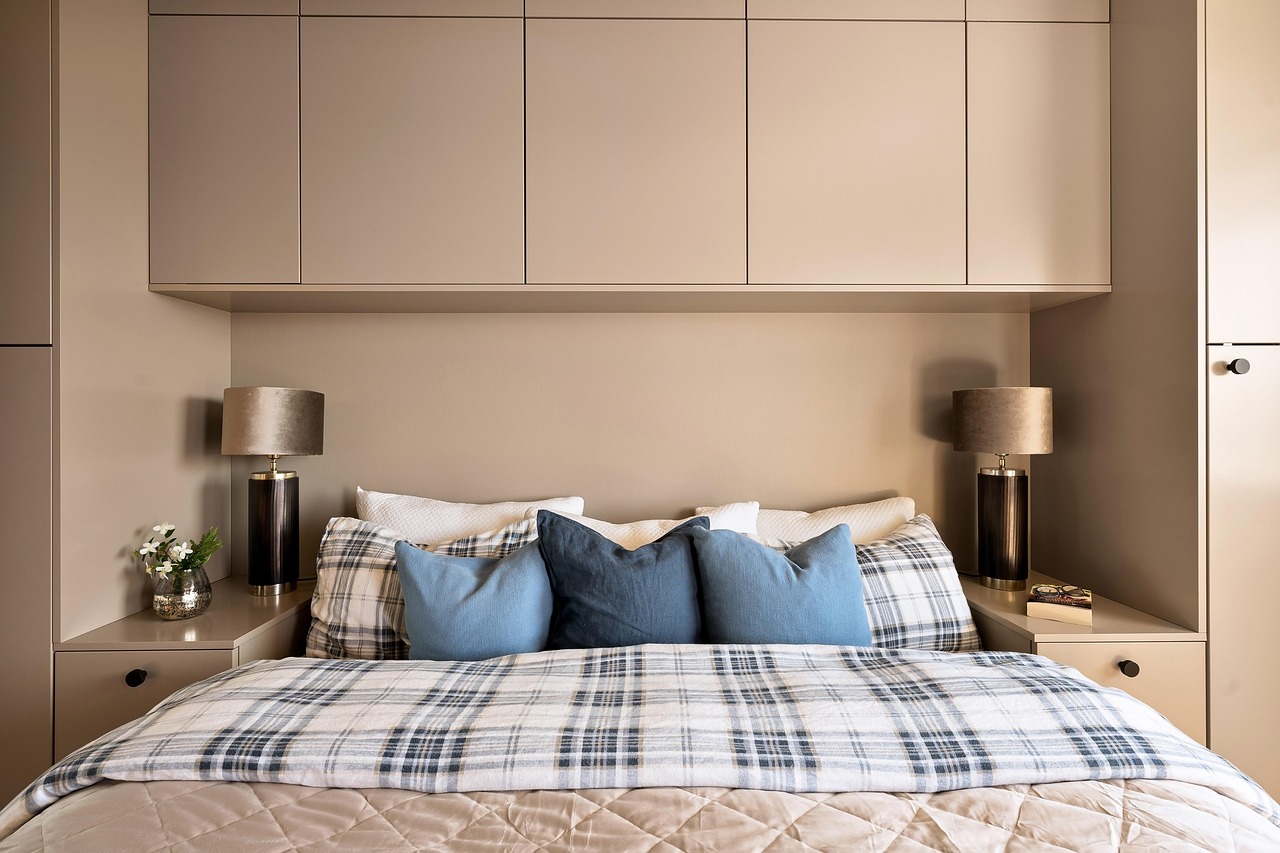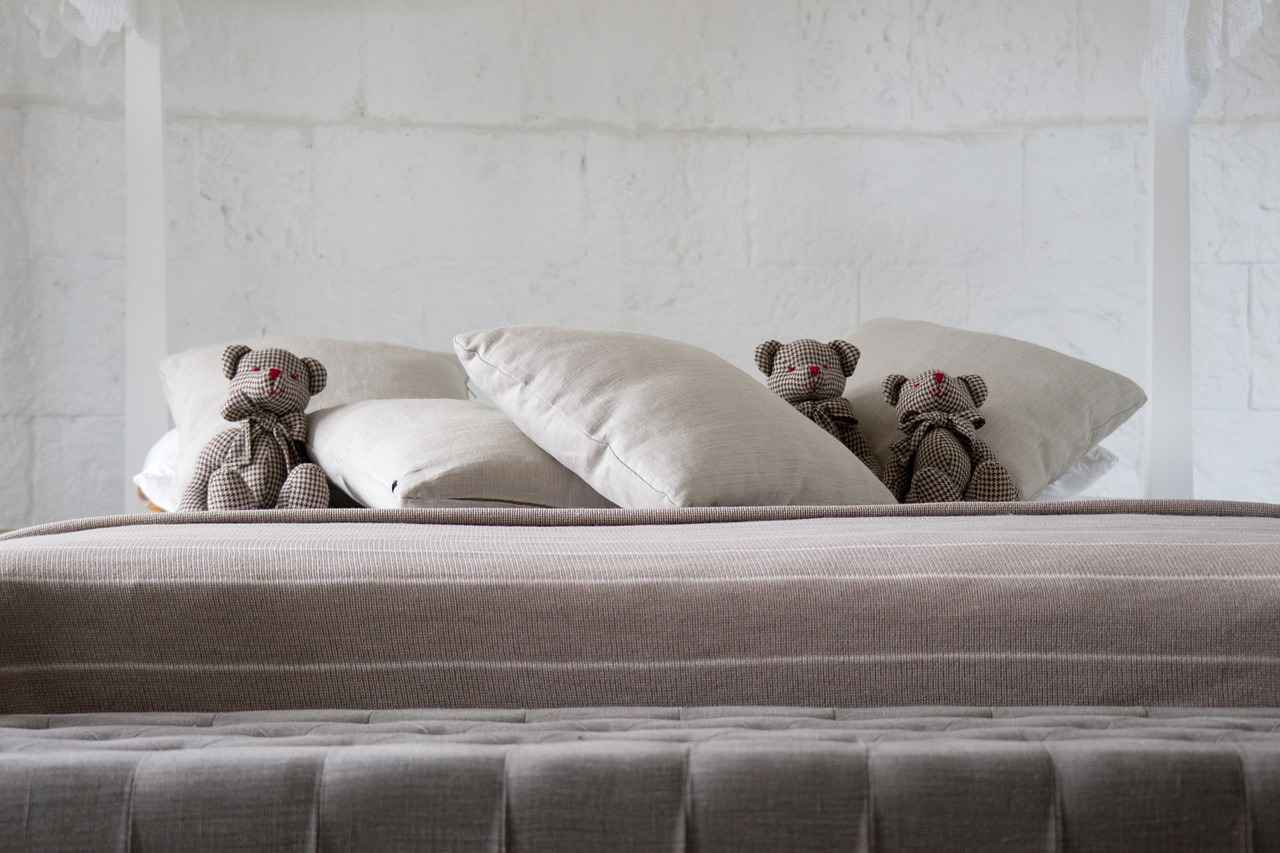This article delves into a variety of stunning wooden bed designs that can elevate the aesthetics of your bedroom while providing comfort and functionality. With an array of styles and finishes to choose from, wooden beds can seamlessly blend into any decor, enhancing the overall ambiance of your space. Whether you prefer a rustic charm or a modern minimalist look, there are countless ideas to explore that cater to different tastes and preferences.
Why Choose Wooden Beds?
Wooden beds are not just a practical choice; they also offer a timeless appeal that can enhance the beauty of your bedroom. The durability of wood ensures that these beds can withstand the test of time, making them a wise investment. Additionally, wooden beds come in various styles, from classic to contemporary, allowing homeowners to find the perfect match for their personal aesthetic.
Types of Wood Used in Bed Designs
Different types of wood contribute to the overall look and feel of a bed. Here, we explore popular woods like oak, pine, and walnut, highlighting their unique characteristics and benefits.
- Oak Beds: Known for their strength and beautiful grain patterns, oak beds are a favorite among homeowners and designers alike.
- Pine Beds: Lightweight and affordable, pine beds are charming and versatile, making them accessible for many.
- Walnut Beds: Renowned for their rich color and grain, walnut beds add a touch of luxury to any bedroom.
Modern Wooden Bed Designs
Modern wooden beds often incorporate sleek lines and minimalistic features. Explore contemporary designs that blend functionality with aesthetic appeal. For instance, platform beds feature a low-profile design, offering a clean and uncluttered look.
Rustic Wooden Bed Designs
Rustic wooden beds bring warmth and character to a bedroom. These designs emphasize natural finishes and textures, creating a cozy atmosphere. Reclaimed wood beds are particularly popular for their eco-friendly appeal and unique character.
Choosing the Right Finish for Your Wooden Bed
The finish of a wooden bed dramatically affects its appearance. Natural finishes enhance the wood’s grain and color, while painted finishes offer a bold look that can match any decor. Consider the overall theme of your bedroom when selecting a finish.
Accessorizing Your Wooden Bed
Accessorizing is crucial to creating a cohesive bedroom design. The right bedding can enhance the beauty of your wooden bed. Explore color palettes that complement various wood tones, and incorporate decorative elements like headboards and canopies to elevate your bed’s style.
Maintenance Tips for Wooden Beds
Proper maintenance ensures your wooden bed remains beautiful and functional. Regular cleaning is essential for maintaining wood. Use soft cloths and appropriate cleaning solutions to protect and preserve your wooden bed. Additionally, consider protective measures to prevent scratches and water damage, keeping your bed looking new for years to come.
In summary, wooden beds offer a blend of style, comfort, and durability. With various designs and finishes available, they can complement any bedroom decor. By understanding the types of wood, exploring design options, and considering maintenance, you can select the perfect wooden bed that meets your needs and enhances your living space.

Why Choose Wooden Beds?
Wooden beds are a classic choice for any bedroom, offering a unique blend of durability and timeless appeal. Their natural beauty and strength make them a popular option among homeowners and interior designers alike. This section delves into the numerous benefits of wooden beds, emphasizing their aesthetic versatility and long-term investment value.
One of the primary reasons to choose a wooden bed is its durability. Unlike beds made from synthetic materials, wooden beds can withstand the test of time. With proper care, a wooden bed can last for decades, providing both comfort and support. This longevity makes wooden beds a worthwhile investment, as they often outlast cheaper alternatives.
- Timeless Aesthetics: Wooden beds come in various styles, from rustic to modern, allowing them to fit seamlessly into any bedroom decor.
- Natural Warmth: The natural grains and textures of wood add warmth and character to a room, creating a cozy atmosphere.
- Versatility: Wooden beds can be painted or stained in various colors, enabling homeowners to customize their look to match their personal style.
Furthermore, wooden beds are not just about looks; they also offer significant health benefits. Wood is a natural material that does not emit harmful chemicals, making it a healthier choice for your sleeping environment. Many wooden beds are crafted from sustainable sources, aligning with eco-friendly practices that are increasingly important to consumers today.
Investing in a wooden bed can also enhance the overall value of your home. High-quality wooden furniture is often viewed as a luxury item, and a well-crafted wooden bed can be a focal point in your bedroom, appealing to potential buyers should you ever decide to sell your home. The craftsmanship and quality associated with wooden beds often lead to higher resale values compared to other materials.
When considering the purchase of a wooden bed, it’s essential to think about the type of wood used in its construction. Different woods offer various benefits and aesthetics. For example, oak is known for its strength and beautiful grain, while pine is lighter and often more affordable. Understanding these differences can help you choose the right bed for your needs and style preferences.
In summary, choosing a wooden bed is a decision that combines style, functionality, and investment value. With their timeless appeal and durability, wooden beds not only enhance the beauty of your bedroom but also serve as a long-lasting piece of furniture that can be cherished for years to come.
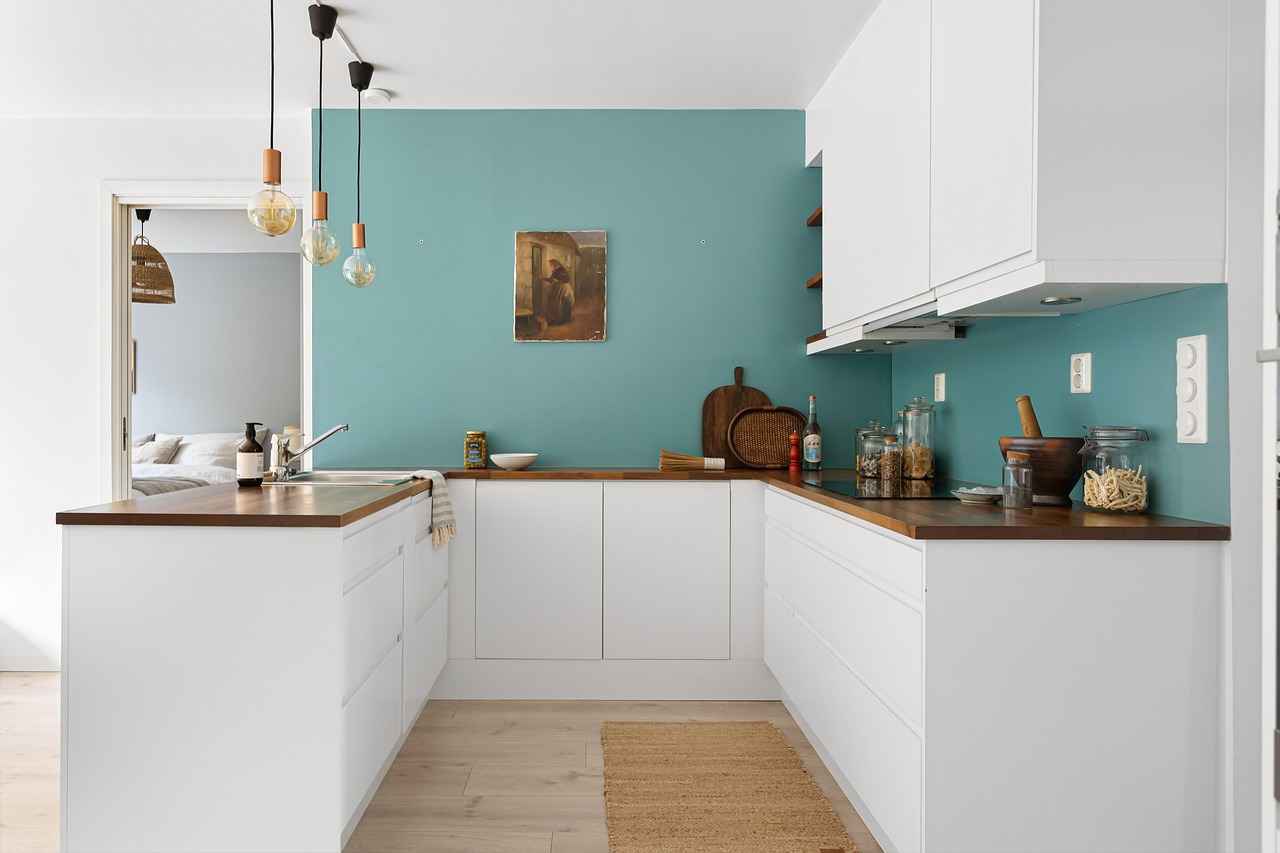
Types of Wood Used in Bed Designs
When it comes to selecting the perfect bed for your bedroom, the type of wood used can significantly influence both the appearance and functionality of the piece. Each type of wood possesses unique characteristics that contribute to the overall aesthetic and durability of the bed. In this section, we will delve into some of the most popular woods used in bed designs, such as oak, pine, and walnut, highlighting their distinctive features and advantages.
Oak is a classic choice for bed frames, known for its remarkable strength and stunning grain patterns. This hardwood is available in two primary varieties: red oak and white oak. Red oak is characterized by its pronounced grain and warm tones, while white oak offers a more subtle grain and a slightly cooler hue.
- Durability: Oak is exceptionally durable, making it resistant to wear and tear.
- Aesthetic Appeal: The natural beauty of oak adds a touch of elegance to any bedroom.
- Versatility: Oak beds can seamlessly fit into various design styles, from traditional to contemporary.
Pine is a lightweight and affordable option that appeals to many homeowners. This softwood is known for its charming appearance and versatility in design.
- Cost-Effective: Pine beds are generally more affordable than hardwood options, making them accessible to a wider audience.
- Natural Aesthetics: With its light color and distinct knots, pine brings a rustic charm to any bedroom decor.
- Easy to Work With: Pine is easy to shape and finish, allowing for a variety of styles and designs.
Walnut is a luxurious hardwood that is highly sought after for its rich color and fine grain. This wood is often used in high-end furniture due to its elegant appearance and durability.
- Rich Color: Walnut features deep browns and purples, adding sophistication to bedroom designs.
- Stability: Walnut is less likely to warp or shrink, ensuring that your bed remains sturdy over time.
- Unique Grain Patterns: Each piece of walnut wood is unique, providing a one-of-a-kind look for your bed.
While oak, pine, and walnut are among the most popular choices, there are several other woods worth considering:
- Cherry: Known for its warm tones and smooth grain, cherry wood darkens beautifully over time.
- Maple: A hard, durable wood with a fine, consistent grain, maple is often used in modern bed designs.
- Birch: Birch offers a light color and is known for its strength, making it a practical choice for beds.
In summary, the type of wood you choose for your bed can greatly affect its style, durability, and overall impact on your bedroom’s decor. Whether you prefer the timeless elegance of oak, the rustic charm of pine, or the luxurious feel of walnut, each wood type offers its own unique benefits. By understanding these differences, you can make an informed decision that aligns with your personal style and practical needs.
Oak Beds
are a popular choice for homeowners and interior designers alike, celebrated for their remarkable combination of strength and beauty. The unique grain patterns and rich color variations of oak create a stunning visual appeal that can enhance any bedroom decor. In this section, we will delve into the specific reasons why oak beds are favored, exploring their durability, aesthetic versatility, and design adaptability.
One of the primary reasons oak is a preferred material for bed frames is its exceptional strength. Oak is a hardwood known for its resilience, making it capable of withstanding daily wear and tear. This durability ensures that an oak bed can last for generations, providing excellent value for homeowners. Additionally, oak’s natural resistance to warping and splitting adds to its longevity, making it a wise investment for any bedroom.
Beyond its structural integrity, oak wood boasts a rich visual appeal. The intricate grain patterns and warm tones of oak add a touch of elegance and sophistication to any space. Whether you prefer a light, natural finish or a darker stain, oak can be easily customized to match various interior styles. This adaptability makes oak beds suitable for rustic, contemporary, or traditional designs, allowing homeowners to express their unique tastes.
Design Styles with Oak
- Rustic Charm: Oak beds can be crafted with a rustic finish, showcasing their natural imperfections and grain. This style is perfect for creating a cozy, cabin-like atmosphere.
- Modern Minimalism: Sleek, contemporary oak bed frames emphasize clean lines and simplicity, making them ideal for modern bedrooms.
- Traditional Elegance: Ornate oak beds with intricate carvings and rich stains can serve as stunning focal points in classic bedroom settings.
Furthermore, oak beds can easily be paired with various accessories and decor styles. Their neutral yet warm tones allow for a wide range of bedding colors and patterns, making it simple to create a cohesive look. Whether you choose bold, vibrant colors or soft, muted tones, oak beds can complement your choices flawlessly.
In terms of maintenance, oak beds are relatively easy to care for. Regular dusting and the occasional application of wood polish can keep the surface looking pristine. Additionally, protective measures such as using coasters and avoiding direct sunlight can help prevent damage and maintain the wood’s natural beauty.
In conclusion, oak beds are an excellent choice for anyone looking to combine durability with style. Their strength, versatility in design, and aesthetic appeal make them a favorite among homeowners and designers. By choosing an oak bed, you are not only investing in a piece of furniture but also enhancing the overall beauty and comfort of your bedroom.
Benefits of Oak
When it comes to choosing the perfect material for beds, oak stands out as a top contender. Its remarkable durability and resistance to wear make it an exceptional choice for furniture that is not only functional but also aesthetically pleasing. Oak is a hardwood known for its strength, which ensures that beds made from this material can withstand the test of time and daily use.
One of the primary reasons homeowners opt for oak beds is their longevity. Unlike softer woods, oak is less prone to dents and scratches, maintaining its beauty even after years of use. This means that investing in an oak bed is a decision that pays off in the long run, as it requires less frequent replacement compared to beds made from less durable materials.
In addition to its physical properties, oak wood features a stunning grain pattern that adds a touch of elegance to any bedroom. Whether finished in a natural stain or painted in a bold color, oak can enhance the overall look of your space. Its versatility allows it to seamlessly fit into various design styles, from rustic to contemporary, making it a favorite among interior designers and homeowners alike.
Moreover, oak’s natural resistance to moisture makes it less susceptible to warping and swelling, which is particularly beneficial in humid environments. This characteristic ensures that your bed remains stable and functional, providing a comfortable sleeping experience night after night.
Additionally, oak is an eco-friendly choice for those who prioritize sustainability. Many oak beds are crafted from responsibly sourced wood, making them a great option for environmentally conscious consumers. The use of oak contributes to the reduction of deforestation, as it is often sourced from managed forests that promote replanting and conservation.
Furthermore, oak beds can be customized to fit your unique style preferences. From classic designs with intricate carvings to sleek, modern lines, the adaptability of oak allows for a wide range of options. This customization means that you can find or create a bed that perfectly complements your bedroom decor, enhancing the overall ambiance of your personal sanctuary.
In summary, the benefits of choosing oak for your bed are numerous. Its durability, longevity, and aesthetic appeal make it an outstanding investment for any bedroom. With its ability to blend seamlessly into various design styles and its environmentally friendly qualities, oak is undoubtedly a wise choice for those looking to enhance their sleeping space.
Design Styles with Oak
When it comes to bedroom design, oak beds stand out as a versatile choice that can seamlessly integrate into various styles. From the rustic charm of a country cottage to the sleek lines of modern minimalism, oak beds provide a foundation that enhances the overall aesthetic of your space. This article delves into the different design styles where oak beds can shine, showcasing their adaptability and timeless appeal.
1. Rustic Style
Rustic design is all about embracing the natural beauty of materials, and oak beds fit perfectly into this theme. The rich grain patterns and warm tones of oak create a cozy atmosphere that invites relaxation. A reclaimed oak bed, with its unique imperfections and history, can serve as a stunning focal point in a rustic bedroom. Pair it with natural textiles, such as linen or wool, and earthy color palettes to enhance the inviting feel of the space.
2. Modern Style
For those who prefer a more contemporary look, oak beds can also be incorporated into modern designs. The clean lines and minimalistic approach of a platform oak bed can complement a modern aesthetic beautifully. Opt for a bed with a smooth finish and simple headboard to maintain a sleek profile. When combined with bold accent colors and geometric patterns in bedding or wall art, an oak bed can create a striking contrast that elevates the entire room.
3. Scandinavian Style
Scandinavian design emphasizes functionality and simplicity, making oak beds an ideal fit. The light hues of oak can brighten up a space, while its natural texture adds warmth. A low-profile oak bed with a simple design aligns perfectly with the Scandinavian ethos. To complete the look, incorporate soft textiles, such as faux fur throws and knitted pillows, alongside minimalist decor elements.
4. Industrial Style
In an industrial-themed bedroom, oak beds can add a touch of warmth to the otherwise raw and edgy decor. Consider pairing an oak bed with metal accents, such as iron bed frames or exposed piping. This juxtaposition creates a visually interesting space that balances the hardness of industrial elements with the softness of wood. Use darker shades in your bedding and accessories to enhance the industrial vibe.
5. Bohemian Style
For those who love a more eclectic approach, oak beds can serve as a grounding element in a bohemian-themed room. The natural warmth of oak complements the vibrant colors and varied patterns typical of bohemian decor. Layer your oak bed with a mix of colorful quilts, patterned pillows, and an array of decorative throws to create a cozy, inviting retreat. Adding plants and handmade decor can further enhance the bohemian feel.
6. Transitional Style
Transitional design blends traditional and modern elements, and oak beds can bridge this gap beautifully. A classic oak bed with a slightly modern twist, such as tapered legs or a unique headboard design, can work well in a transitional space. Use neutral colors for bedding and accent pieces to maintain a harmonious balance between old and new.
In summary, oak beds are not just functional pieces of furniture; they are versatile elements that can enhance the aesthetic of any bedroom style. Whether you prefer the rustic charm, modern elegance, or eclectic bohemian flair, oak beds provide a solid foundation that can adapt to your personal taste. By thoughtfully considering the surrounding decor and accessories, you can create a cohesive and inviting bedroom that showcases the beauty of oak.
Pine Beds
are increasingly becoming a popular choice for many homeowners due to their lightweight nature and affordability. This section delves into the unique charm and versatility of pine in bed designs, showcasing why they are an excellent addition to any bedroom.
Pine is a softwood that is not only easy to work with but also offers a range of aesthetic options. Its natural light color can brighten up a room, making it feel more spacious and inviting. Additionally, the distinctive grain patterns of pine add character and warmth, creating a cozy atmosphere. Whether you prefer a rustic or modern look, pine beds can be tailored to fit your style.
- Affordability: One of the most compelling reasons to choose pine beds is their cost-effectiveness. Compared to hardwood options like oak or walnut, pine beds are generally much more budget-friendly, making them accessible to a wider audience.
- Lightweight: Pine is significantly lighter than many other woods, which makes it easier to move and rearrange in your space. This is especially beneficial for those who enjoy changing their bedroom layout frequently.
- Versatile Designs: Pine can be crafted into various styles, from traditional to contemporary. Its flexibility allows designers to create everything from sleek platform beds to ornate canopy beds.
Moreover, pine beds can be finished in a variety of ways, allowing homeowners to customize their look. Whether you prefer a natural finish that highlights the wood’s grain or a painted finish in bold colors, pine can adapt to your vision. Staining can enhance the wood’s natural beauty, while painting can provide a pop of color to match your bedroom decor.
In addition to aesthetics, pine beds are also practical. They are typically easy to assemble and disassemble, making them ideal for those who move frequently or like to switch up their decor. Furthermore, pine is a sustainable choice, as it grows quickly and is often sourced from responsibly managed forests.
For those concerned about durability, it’s worth noting that while pine is softer than hardwoods, it can still withstand daily use with proper care. Regular maintenance, such as cleaning and occasional polishing, will keep your pine bed looking fresh and new for years to come.
To sum up, pine beds offer a combination of affordability, lightweight design, and versatility that makes them an excellent choice for any bedroom. Their unique charm and ability to blend with various decor styles further enhance their appeal. Whether you’re furnishing a guest room or revamping your master suite, a pine bed can provide both comfort and style.
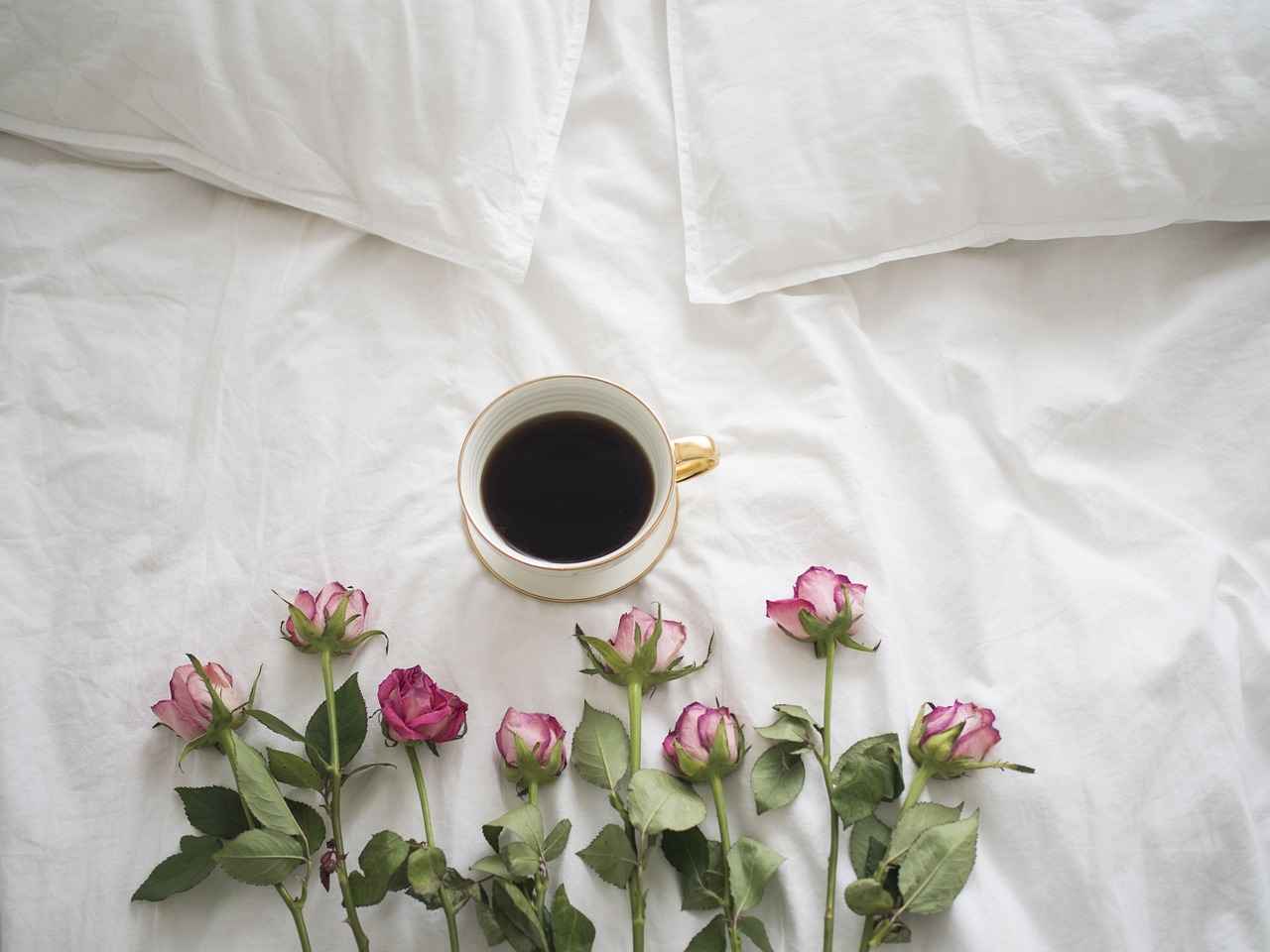
Modern Wooden Bed Designs
When it comes to designing a modern bedroom, play a pivotal role in creating an inviting and stylish atmosphere. These beds are not only functional but also serve as a statement piece that can elevate the overall aesthetic of your space. With their sleek lines and minimalistic features, modern wooden beds seamlessly blend functionality with aesthetic appeal.
One of the most significant trends in contemporary bedroom design is the focus on simplicity. Modern wooden beds often feature clean lines and geometric shapes, which contribute to a calm and organized environment. The use of natural wood finishes enhances the organic feel of the space while adding warmth and texture.
- Platform Beds: These beds are characterized by their low-profile design, often eliminating the need for a box spring. Their minimalist look makes them an excellent choice for small spaces, allowing for more open floor plans.
- Canopy Beds: While traditionally ornate, modern canopy beds have been reimagined with a sleek and simple frame. This design adds a touch of elegance and can create a cozy nook within your bedroom.
- Slatted Designs: Beds with slatted headboards or footboards offer a contemporary twist on classic designs, allowing for better airflow and a lighter appearance.
In addition to their aesthetic appeal, modern wooden beds are designed with functionality in mind. Many styles incorporate built-in storage solutions, such as drawers or shelves, making them perfect for maximizing space in smaller bedrooms. This feature not only helps in maintaining a clutter-free environment but also adds practicality to your bedroom design.
Another important aspect of modern wooden bed designs is the choice of materials. While traditional hardwoods like oak and walnut remain popular, contemporary designs often use engineered woods or mixed materials, combining wood with metal or upholstery to create a unique look. This blend of materials can enhance durability while adding visual interest.
When selecting a modern wooden bed, consider the color and finish. Lighter woods, such as birch or maple, can make a room feel more spacious and airy, while darker woods like mahogany or walnut add richness and sophistication. Additionally, the finish can range from natural oils that showcase the wood’s grain to painted options that allow for personalization in color.
Accessorizing your modern wooden bed can further enhance its appeal. Opt for bedding that complements the wood tones. Neutral colors or soft pastels work well with lighter woods, while bold colors can create a striking contrast against darker finishes. Decorative elements such as minimalist headboards or elegant canopies can also elevate the design, adding layers of texture and style.
In summary, modern wooden bed designs are an excellent choice for those looking to create a stylish and functional bedroom. With their blend of sleek lines, practicality, and natural beauty, these beds can transform any space into a serene retreat. Explore various styles, materials, and accessories to find the perfect fit for your personal taste and bedroom decor.
Platform Beds
have surged in popularity in recent years, becoming a favored choice for those seeking a modern and minimalist aesthetic. Their low-profile design not only enhances the visual appeal of a bedroom but also offers practical benefits that cater to contemporary lifestyles.
One of the most significant advantages of platform beds is their supportive structure. Unlike traditional beds that rely on box springs, platform beds feature a solid base that provides adequate support for mattresses. This can lead to improved sleep quality, as the mattress remains stable and less prone to sagging over time. Furthermore, many platform beds are designed to accommodate various mattress types, including memory foam and latex, making them versatile for different preferences.
In addition to their functional benefits, platform beds come in a myriad of style variations. Whether you prefer a sleek, modern look or a more rustic vibe, there is a platform bed design to suit your taste. For instance, some platform beds feature a minimalist aesthetic with clean lines and a low height, perfect for a contemporary bedroom. Others may incorporate natural wood finishes, adding warmth and texture that complements a more traditional or rustic decor.
| Style Variation | Description |
|---|---|
| Modern | Sleek lines, often made of metal or engineered wood, with a focus on simplicity. |
| Rustic | Utilizes reclaimed wood or distressed finishes, bringing a cozy and natural feel. |
| Industrial | Combines metal and wood, featuring raw finishes and an urban aesthetic. |
| Scandinavian | Characterized by light woods and functional design, emphasizing minimalism. |
Another appealing aspect of platform beds is their space-saving capabilities. Many designs come equipped with built-in storage solutions, such as drawers or compartments underneath the bed. This feature is particularly beneficial for smaller bedrooms where maximizing space is essential. By utilizing the area beneath the bed, homeowners can keep their rooms tidy and organized without sacrificing style.
For those who appreciate customization, platform beds offer a range of options for headboards and accessories. From upholstered headboards that add a touch of luxury to simple wooden designs that emphasize a clean look, the choices are abundant. Additionally, incorporating decorative elements such as throws and cushions can enhance the overall aesthetic, allowing for personal expression and creativity in bedroom design.
In summary, platform beds are an excellent choice for anyone looking to combine style and functionality in their bedroom. Their supportive structure, diverse styles, and space-saving features cater to modern living while providing a comfortable sleeping experience. With numerous design options available, platform beds can seamlessly integrate into various decor styles, making them a versatile addition to any home.
Canopy Beds
Canopy beds are not just a trend; they are a timeless statement that can elevate the ambiance of any bedroom. With their elegant frames and the ability to create an intimate space, canopy beds offer a unique blend of style and comfort. They can transform a simple bedroom into a luxurious retreat.
When considering a canopy bed, one of the most popular materials is wood. Wooden canopy beds bring warmth and a natural aesthetic, making them suitable for various design styles, from rustic to contemporary. The beauty of wood lies in its versatility and the unique character each piece possesses, allowing homeowners to choose designs that resonate with their personal taste.
One of the remarkable features of wooden canopy beds is their ability to create a dramatic focal point in the bedroom. The tall posts can be adorned with flowing drapes or left open to showcase the wood’s natural grain. This design element not only adds visual interest but also enhances the overall atmosphere of the room, making it feel more inviting and cozy.
- Customization Options: Wooden canopy beds can be customized to fit any size or style. Whether you prefer a minimalist frame or an ornate design, the options are endless.
- Color and Finish: The finish of the wood can significantly impact the look of the bed. From rich, dark stains to light, natural finishes, the choice can complement or contrast with your existing decor.
- Versatile Decor: Canopy beds can be styled in numerous ways. Consider adding fairy lights for a whimsical touch or heavy drapes for a more dramatic effect.
In addition to their aesthetic appeal, wooden canopy beds also offer practical benefits. They provide a sense of enclosure and privacy, making the bedroom feel like a personal sanctuary. This can be particularly beneficial in larger spaces where you want to create a more intimate atmosphere.
Moreover, the height of canopy beds can enhance the perception of space, drawing the eye upward and making the room feel larger. This is especially advantageous in smaller bedrooms where maximizing space is crucial.
When selecting a wooden canopy bed, it’s essential to consider the overall design theme of your bedroom. A rustic wooden bed with natural finishes can create a cozy, cabin-like feel, while a sleek, modern design can add a contemporary touch. You can also mix and match styles to create a unique look that reflects your personality.
In conclusion, wooden canopy beds are an excellent choice for anyone looking to enhance the elegance and drama of their bedroom. With their stunning designs and functional benefits, they can transform any space into a luxurious retreat. Whether you opt for a traditional or modern style, a wooden canopy bed is sure to make a lasting impression.
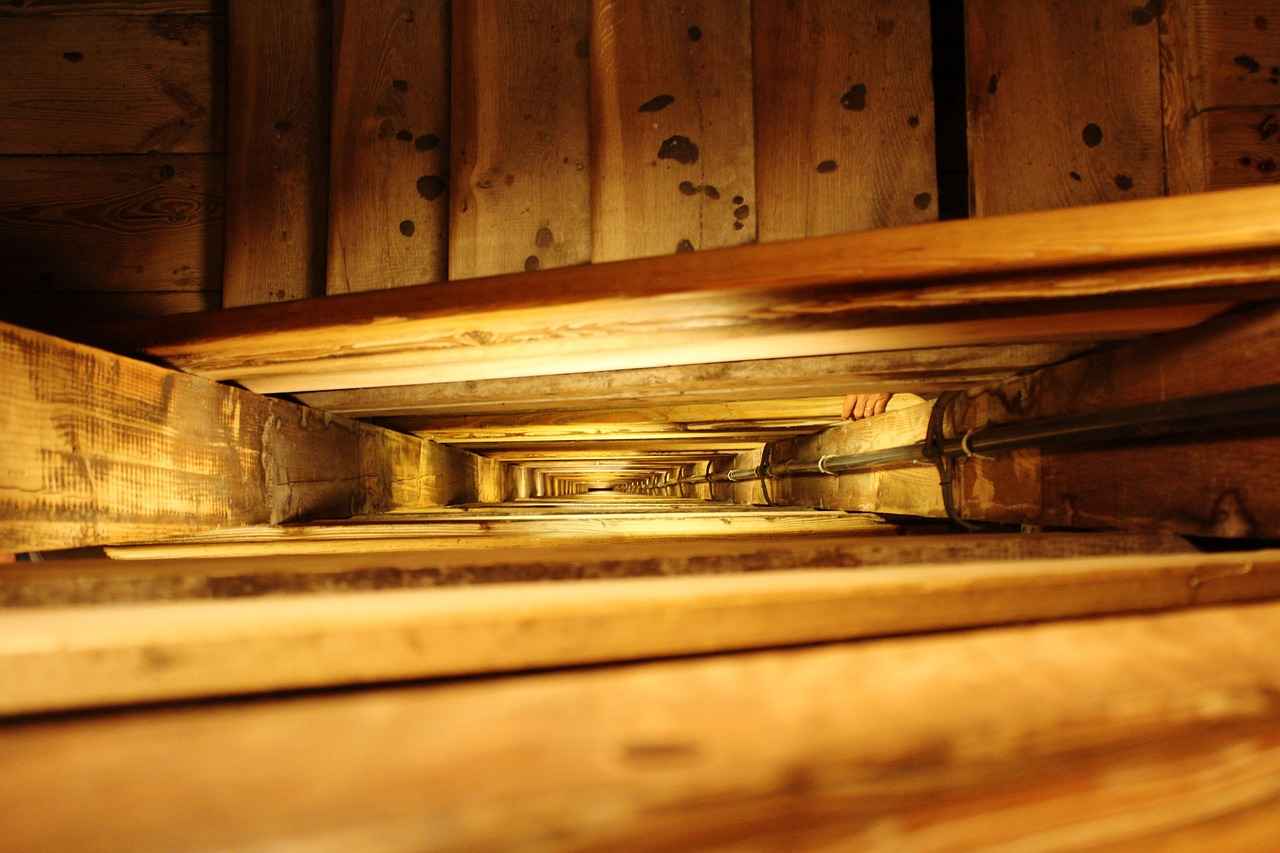
Rustic Wooden Bed Designs
are a celebration of nature’s beauty, bringing a sense of warmth and character to any bedroom. These designs often feature raw and organic elements, allowing the natural textures and finishes of the wood to shine through. In this section, we will explore various rustic wooden bed designs that not only enhance the aesthetic appeal of your space but also create a cozy and inviting atmosphere.
One of the defining characteristics of rustic wooden beds is their natural finishes. These finishes highlight the wood’s inherent grain patterns, knots, and imperfections, which add to the charm and uniqueness of each piece. Whether you opt for a matte or satin finish, the goal is to maintain the wood’s natural look while providing protection. Popular finishes include:
- Oil-based finishes: These penetrate the wood, enhancing its color and grain while providing a durable protective layer.
- Water-based finishes: These are eco-friendly options that dry quickly and offer a clear, non-yellowing finish.
Rustic beds often incorporate various design elements that contribute to their overall aesthetic. Some common features include:
- Live Edge Details: Beds with live edges retain the natural shape of the wood, creating a striking visual effect.
- Textured Surfaces: Rough-hewn or distressed finishes can enhance the rustic appeal, giving the bed a handcrafted feel.
- Sturdy Construction: Rustic beds are typically built from solid wood, ensuring durability and longevity.
Reclaimed wood beds are an excellent choice for those seeking sustainable options. Made from salvaged wood, these beds have a rich history and unique character. Each piece tells a story, with varying colors and textures that add depth to your bedroom. The benefits of reclaimed wood include:
- Eco-friendliness: Using reclaimed wood reduces the demand for new timber, making it a sustainable choice.
- Unique Aesthetics: The weathered appearance of reclaimed wood adds authenticity and charm.
Log cabin style beds evoke a sense of coziness and connection to nature. These beds are typically constructed from thick logs, showcasing the natural beauty of the wood. They can create a retreat-like atmosphere in your bedroom, perfect for those who love the outdoors. Key features of log cabin style beds include:
- Robust Design: The solid construction provides a sturdy foundation, ensuring comfort and stability.
- Natural Aesthetics: The rustic charm of log beds pairs beautifully with earthy tones and natural fabrics.
While rustic wooden beds are often associated with traditional designs, they can also be paired with modern elements for a unique twist. Consider blending rustic beds with contemporary decor, such as:
- Minimalist Bedding: Simple, neutral-colored bedding can create a striking contrast against the rustic wood.
- Industrial Accents: Incorporating metal elements, like iron bed frames or fixtures, can enhance the overall aesthetic.
In conclusion, rustic wooden bed designs are a fantastic way to bring warmth and character to your bedroom. By emphasizing natural finishes, exploring reclaimed wood options, and blending styles, you can create a space that reflects your personal taste while providing a cozy retreat.
Reclaimed Wood Beds
are not just a trend; they represent a movement towards sustainability and unique design in the world of furniture. Crafted from salvaged wood, these beds offer an eco-friendly alternative to traditional furniture, promoting a greener lifestyle while adding character to your bedroom.
One of the primary benefits of reclaimed wood beds is their environmental impact. By using wood that has already been harvested, we reduce the demand for new timber, which helps to conserve forests and reduce deforestation. This practice also minimizes waste, as it repurposes materials that might otherwise end up in landfills.
In addition to their environmental benefits, reclaimed wood beds boast a distinctive aesthetic. Each piece of wood carries its own history, with unique grain patterns, colors, and textures that cannot be replicated. This individuality means that no two reclaimed wood beds are alike, allowing homeowners to showcase a piece of art in their bedrooms. The natural imperfections, such as knots and weathered surfaces, add a rustic charm that resonates with those who appreciate the beauty of nature.
Moreover, reclaimed wood beds are incredibly durable. The wood used in these beds often comes from older structures, such as barns or factories, which means it has already withstood the test of time. This inherent strength makes reclaimed wood an excellent choice for furniture that is built to last.
When it comes to design versatility, reclaimed wood beds can fit seamlessly into various interior styles, from rustic and farmhouse to industrial and modern. Their warm tones and textures can create a cozy atmosphere, making the bedroom a welcoming retreat. Homeowners can choose from various designs, including platform beds, canopy beds, and sleigh beds, all crafted from reclaimed materials.
Incorporating a reclaimed wood bed into your bedroom decor also allows for creative expression. You can pair it with vintage or upcycled accessories, such as handmade quilts or antique nightstands, to enhance the rustic theme. Alternatively, a reclaimed wood bed can serve as a stunning focal point in a more contemporary setting, contrasting beautifully with sleek lines and modern furnishings.
To ensure the longevity of your reclaimed wood bed, proper maintenance is essential. Regular cleaning with a soft cloth and gentle wood cleaner will help preserve its natural beauty. Additionally, applying a protective finish can guard against scratches and water damage, keeping your bed looking new for years to come.
In summary, reclaimed wood beds are a fantastic choice for anyone looking to enhance their bedroom with a unique, eco-friendly piece of furniture. Not only do they contribute to a more sustainable lifestyle, but they also offer unparalleled beauty and durability. With their rustic charm and versatility, reclaimed wood beds can transform any bedroom into a stylish sanctuary.
Log Cabin Style Beds
are more than just a place to sleep; they are a statement piece that brings the charm of the outdoors into your home. These beds evoke a cozy, rustic feel, reminiscent of a serene retreat in the mountains or a peaceful getaway by the lake. The natural wood finishes and sturdy construction create an inviting atmosphere, making your bedroom a sanctuary where you can unwind and relax.
One of the defining features of log cabin style beds is their unique design. Typically constructed from solid logs, these beds showcase the natural beauty of the wood, with each piece telling its own story through knots and grain patterns. This natural aesthetic not only enhances the beauty of your bedroom but also adds a touch of authenticity that mass-produced furniture often lacks.
When you incorporate a log cabin style bed into your bedroom, you create a retreat-like atmosphere that encourages relaxation and peace. The earthy tones and textures of the wood can be complemented with soft bedding and warm colors, enhancing the overall coziness of the space. Imagine curling up with a good book or enjoying a quiet night’s sleep surrounded by the warmth of natural materials.
Moreover, log cabin style beds are versatile in their design, fitting seamlessly into various decor styles. Whether your home is traditionally rustic, modern farmhouse, or even contemporary, these beds can adapt to complement your existing decor. You can pair a log cabin bed with modern furnishings for a striking contrast or incorporate it into a fully rustic setting for a cohesive look.
In terms of functionality, log cabin style beds often come with built-in storage options, such as drawers or under-bed spaces, making them practical for smaller bedrooms. These features help maximize space while maintaining a clean and organized look. Additionally, the solid construction of these beds ensures durability, making them a long-lasting investment.
To enhance the log cabin theme, consider accessorizing with natural elements. Incorporate soft textiles like wool or flannel for bedding, and add throw pillows in earthy tones or patterns that reflect the outdoors. A rustic wooden nightstand or a reclaimed wood dresser can also complement the bed, creating a cohesive look throughout the room.
In summary, log cabin style beds offer a perfect blend of comfort, style, and functionality. They evoke a sense of tranquility and connection to nature, transforming your bedroom into a peaceful retreat. By choosing this style, you can create an inviting space that encourages relaxation and rejuvenation, making it a wonderful addition to any home.
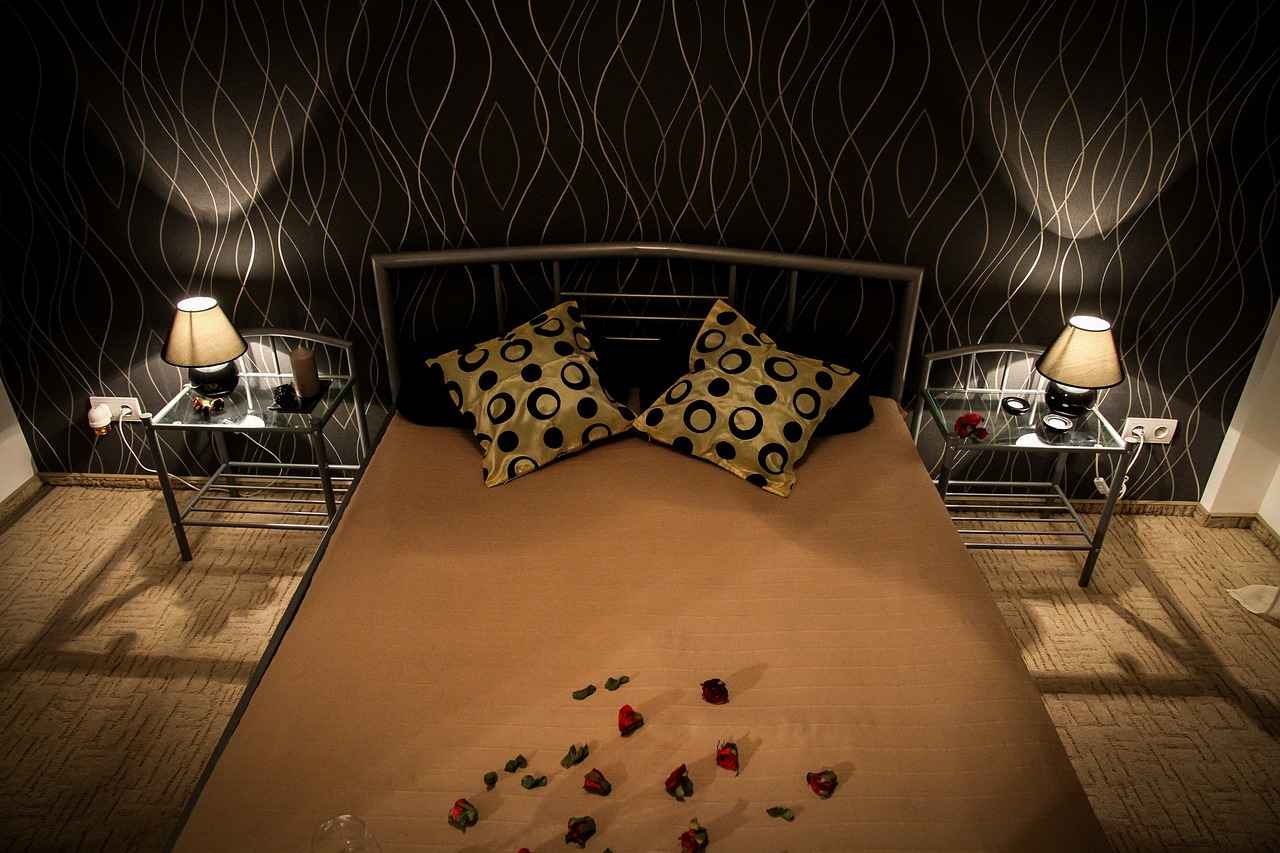
Choosing the Right Finish for Your Wooden Bed
When it comes to enhancing the beauty of your wooden bed, the finish plays a crucial role. The right finish not only affects the bed’s appearance but also its durability and maintenance. This section delves into the various types of finishes available, including stains and paints, to help you make an informed choice that complements your bedroom decor.
Finishes can be broadly categorized into two types: natural finishes and painted finishes. Each type has its unique characteristics and applications, allowing you to tailor your wooden bed to your personal style.
Natural finishes aim to enhance the inherent beauty of the wood. They allow the wood grain and texture to shine through, creating a warm and inviting look. Here are some popular natural finishes:
- Oil Finishes: These penetrate deeply into the wood, providing a rich, warm tone while enhancing the grain. They are easy to apply and maintain.
- Varnish: A more durable option, varnish forms a protective layer on the surface. It is available in various sheens, from matte to glossy.
- Wax: Wax finishes provide a soft luster and are easy to apply. However, they require regular reapplication to maintain their appearance.
Natural finishes are ideal for those who appreciate the authentic look of wood and want to keep the natural characteristics intact.
If you’re looking to make a bold statement, painted finishes are the way to go. They allow for endless customization and can easily match any decor style. Here are some considerations when opting for a painted finish:
- Color Selection: Choose colors that complement your bedroom’s overall theme. Soft pastels can create a calming atmosphere, while bold hues can add vibrancy.
- Techniques: Various painting techniques, such as distressing or ombre, can add depth and character to your wooden bed.
- Durability: Ensure you select high-quality paint designed for furniture to withstand wear and tear.
Painted finishes are perfect for those who want to express their creativity and make their wooden bed a focal point in the room.
When selecting a finish, consider the overall style of your bedroom. A rustic theme may benefit from a natural finish that highlights the wood’s imperfections, while a modern aesthetic might call for a sleek, painted look. Always test your chosen finish on a small, inconspicuous area to ensure it meets your expectations.
Regardless of the finish you choose, proper maintenance is key to preserving the beauty of your wooden bed. Regular dusting, using appropriate cleaning products, and avoiding direct sunlight will help maintain the finish’s integrity. For painted finishes, touch-ups may be necessary over time to keep the bed looking fresh.
In conclusion, the finish of your wooden bed is a significant factor that influences its overall appearance and longevity. By understanding the differences between natural and painted finishes and considering your personal style, you can select the perfect finish that not only enhances the beauty of your bed but also fits seamlessly into your bedroom decor.
Natural Finishes
play a crucial role in enhancing the beauty of wooden beds, allowing the inherent grain and color of the wood to shine through. Unlike synthetic finishes, which can mask the wood’s natural features, these finishes preserve and highlight the unique characteristics of each piece. This section delves into the benefits of using natural finishes on wooden beds, exploring how they can transform your bedroom into a warm and inviting sanctuary.
One of the primary advantages of natural finishes is their ability to enhance the visual appeal of the wood. For instance, a clear oil finish can bring out the rich hues of oak or walnut, emphasizing the intricate patterns of the grain. This not only adds depth to the wood but also creates a stunning focal point in your bedroom. Additionally, natural finishes allow for a variety of textures, from smooth and polished to rustic and weathered, enabling homeowners to choose a finish that aligns with their personal style.
Natural finishes are also environmentally friendly. Many of these products are made from sustainable materials and contain no harmful chemicals, making them a safer choice for your home. This aspect is particularly appealing to eco-conscious consumers who are looking to minimize their environmental impact while still achieving a beautiful aesthetic.
When considering natural finishes, there are several options to choose from:
- Oil Finishes: These penetrate deeply into the wood, providing a durable and water-resistant surface while enhancing the grain.
- Wax Finishes: Wax offers a soft sheen and is easy to apply, making it a popular choice for those seeking a low-maintenance option.
- Shellac: This natural resin creates a hard finish that adds a warm glow to the wood, perfect for more traditional designs.
- Varnish: While not entirely natural, many varnishes are made with natural resins and provide a tough, protective layer that is ideal for high-use furniture.
In addition to enhancing the wood’s appearance, natural finishes also contribute to the longevity of your wooden bed. By providing a protective barrier against moisture and wear, these finishes help prevent damage that can occur over time. Regular maintenance, such as reapplying oil or wax, can further extend the life of your bed, ensuring it remains a cherished piece in your home for years to come.
Finally, opting for a natural finish allows for greater customization. Homeowners can experiment with different stains or oils to achieve their desired look, whether it’s a deep, rich color or a light, airy finish. This flexibility makes it easier to match the bed with existing decor or to create a new design theme altogether.
In summary, natural finishes are an excellent choice for enhancing the beauty and durability of wooden beds. By highlighting the wood’s natural grain and color, these finishes not only elevate the aesthetic appeal of your bedroom but also contribute to a healthier home environment. Whether you prefer the warmth of oil, the simplicity of wax, or the elegance of shellac, there is a natural finish that can perfectly complement your wooden bed design.
Painted Finishes
are an excellent way to transform the look of wooden beds, providing a bold aesthetic that can seamlessly integrate with any decor style. Whether you prefer a vibrant pop of color or a subtle pastel hue, painted finishes offer versatility and personalization for your bedroom.
When considering painted finishes, it’s essential to explore the variety of popular colors that can enhance your wooden bed. Some of the most sought-after shades include:
- Classic White: A timeless choice that brings a fresh and airy feel to the room.
- Deep Navy: Adds sophistication and pairs well with metallic accents.
- Soft Pastels: Colors like mint green or blush pink create a serene and inviting atmosphere.
- Bold Black: Provides a dramatic contrast and a modern touch.
In addition to color, the techniques used for painting wooden beds can greatly affect the final appearance. Here are some popular methods:
- Brush Painting: This traditional method allows for precision and control, making it ideal for intricate designs.
- Spray Painting: Offers a smooth and even finish, perfect for achieving a professional look without brush strokes.
- Distressing: This technique adds character by creating a vintage or rustic appearance, often achieved through sanding or applying a glaze.
- Ombre Effects: A trendy choice that blends two or more colors for a stunning gradient effect.
Before you start painting, it’s crucial to prepare the wooden surface properly. Begin by cleaning the bed to remove dust and grease. Next, lightly sand the surface to ensure better paint adhesion. Applying a primer can also enhance the durability of the finish and improve color vibrancy.
For those looking to maintain their painted finishes, regular care is essential. Wipe the surface with a damp cloth to keep it clean, and avoid using harsh chemicals that can damage the paint. Additionally, consider applying a clear protective coat to safeguard against scratches and wear.
Ultimately, painted finishes not only enhance the visual appeal of wooden beds but also allow homeowners to express their personal style. By choosing the right colors and techniques, you can create a stunning focal point in your bedroom that reflects your unique taste.

Accessorizing Your Wooden Bed
Accessorizing your wooden bed is essential for achieving a harmonious and inviting bedroom atmosphere. The right accessories not only enhance the aesthetic appeal of the bed but also contribute to the overall comfort and functionality of the space. In this section, we will explore various tips and ideas for selecting bedding, pillows, and decorative elements that perfectly complement your wooden bed.
The choice of bedding plays a significant role in defining the look of your wooden bed. Opt for neutral tones or earthy colors that resonate with the natural hues of the wood. Shades like beige, taupe, or soft greens can create a calming effect, while bolder colors can add a pop of interest. Consider the following:
- Layering Textures: Combine different fabrics such as cotton, linen, and velvet to add depth to your bedding.
- Seasonal Changes: Use lighter fabrics in warmer months and heavier materials in winter for comfort.
- Pattern Play: Introduce subtle patterns like stripes or florals to add visual interest without overwhelming the space.
Pillows are not just for comfort; they also serve as decorative accents. When accessorizing your wooden bed:
- Variety of Sizes: Use a mix of sizes, such as standard, queen, and decorative pillows, to create a layered look.
- Color Coordination: Choose colors that harmonize with your bedding while contrasting with the wood for a balanced appearance.
- Personal Touch: Incorporate pillows with unique patterns or textures that reflect your personal style.
Decorative accessories can significantly enhance the charm of your wooden bed. Consider the following elements:
- Headboards: A well-chosen headboard can act as a stunning focal point. Opt for upholstered, wooden, or even metal headboards that complement your bed’s design.
- Canopies: Adding a canopy can create a cozy, intimate atmosphere. Choose sheer fabrics for a light look or heavier materials for a more dramatic effect.
- Bed Skirts: A bed skirt can add a polished finish to your bed while concealing under-bed storage.
Beyond bedding and pillows, consider adding accent decor around your wooden bed to create a cohesive look:
- Wall Art: Hang artwork that complements the colors of your bedding and wood finish to tie the room together.
- Lamps and Lighting: Select bedside lamps that match the aesthetic of your wooden bed, whether it be rustic, modern, or traditional.
- Throws and Blankets: Drape a stylish throw or blanket over the foot of the bed for added warmth and texture.
By thoughtfully accessorizing your wooden bed with suitable bedding, pillows, and decorative elements, you can create a stylish and cohesive bedroom design that reflects your personal taste. Remember to keep the overall theme of your room in mind, ensuring that each piece works harmoniously with the wooden bed to create an inviting and comfortable space.
Choosing Bedding Colors
When it comes to designing your bedroom, the color palette of your bedding plays a crucial role in enhancing the beauty of your wooden bed. The right choice can create a harmonious and inviting atmosphere, complementing the natural tones of the wood while reflecting your personal style. Let’s explore various color palettes that work exceptionally well with different wood tones.
Before selecting bedding colors, it’s essential to understand the various wood tones that can influence your choices:
- Light Woods: Such as pine and maple, offer a fresh and airy feel.
- Medium Woods: Oak and cherry provide a warm, rich appearance.
- Dark Woods: Walnut and mahogany add depth and sophistication to a space.
For beds made from light woods, consider using soft and muted tones. Colors like pastel blues, soft greens, and gentle grays can create a serene environment. Here are some combinations:
- Pastel Blue and White: This combination offers a calm and refreshing look.
- Soft Green with Cream: Perfect for a natural and organic feel.
- Light Gray and Blush: Adds a modern touch while remaining cozy.
Medium wood beds, like those made from oak or cherry, can accommodate a broader range of colors. Richer tones can enhance the warmth of the wood:
- Rustic Red and Beige: This palette brings a cozy, homey vibe.
- Deep Blue and Tan: A classic combination that adds sophistication.
- Warm Yellow and Gray: Infuses energy while maintaining balance.
Dark wood beds provide a dramatic backdrop, allowing for bold and vibrant bedding choices. Consider these striking combinations:
- Charcoal Gray and Mustard Yellow: A trendy and contemporary look.
- Rich Jewel Tones: Such as emerald green or royal blue, can create a luxurious feel.
- White and Black: A timeless classic that exudes elegance.
In addition to color, the pattern and texture of your bedding are crucial. For light wood beds, consider delicate patterns like florals or stripes. Medium wood beds can handle bolder patterns, while dark wood beds often benefit from solid colors or subtle textures to prevent overwhelming the space.
Don’t forget to accessorize! Throw pillows and blankets in complementary colors can enhance the overall look. For example:
- Light Wood: Use soft, textured throws in muted colors.
- Medium Wood: Incorporate patterned pillows to bring in visual interest.
- Dark Wood: Opt for contrasting colors to make a statement.
In conclusion, the right bedding colors can significantly enhance the beauty of your wooden bed, creating a cohesive and stylish bedroom design. By understanding wood tones and selecting appropriate color palettes, you can transform your space into a beautiful retreat that reflects your personal style.
Incorporating Decorative Elements
When it comes to enhancing the style of your wooden bed, decorative elements play a crucial role. Accessories such as headboards, canopies, and even bed skirts can transform a simple wooden bed into a stunning focal point in your bedroom. In this section, we will explore various ways to incorporate these elements effectively to elevate the overall aesthetic of your space.
Choosing the Right Headboard
A headboard serves as a statement piece and can set the tone for your entire bedroom decor. Here are some popular styles:
- Upholstered Headboards: These add a touch of luxury and comfort, making them perfect for a cozy atmosphere.
- Wooden Headboards: Opt for a headboard that matches or contrasts with your bed frame. Consider intricate carvings or a simple slatted design.
- Floating Headboards: Create a modern look by choosing a headboard that appears to “float” above the bed, adding visual interest.
When selecting a headboard, consider the color and texture to complement your wooden bed. For instance, a soft fabric headboard can soften the look of a robust wooden frame.
Adding Canopies for Elegance
Canopy beds are a timeless choice that can introduce an air of elegance and romance to your bedroom. Here’s how to incorporate canopies:
- Fabric Selection: Choose lightweight fabrics like sheer organza or heavier drapes depending on the mood you wish to create.
- Mounting Options: Canopies can be hung from the ceiling or attached to the bed frame itself. Ensure the mounting is secure for safety.
- Layering: Consider layering different fabrics for a more dynamic look. Combining textures can add depth and interest.
Canopies can be particularly effective in creating a cozy nook within your bedroom, perfect for reading or relaxation.
Using Decorative Pillows and Throws
Another easy way to accessorize your wooden bed is through the use of decorative pillows and throws. Here are some tips:
- Color Coordination: Choose pillows that complement your bedding and the wood tones of your bed. This creates a cohesive look.
- Variety in Textures: Mix different fabrics such as cotton, velvet, and linen to create a visually appealing arrangement.
- Layering Techniques: Start with larger pillows at the back and smaller ones at the front. Add a throw blanket at the foot of the bed for a polished finish.
These accessories not only enhance the style of your wooden bed but also provide added comfort.
Incorporating Bed Skirts
Bed skirts can be a practical yet stylish addition to your wooden bed. They can help conceal under-bed storage while adding a touch of elegance. Here are some considerations:
- Fabric and Design: Choose a fabric that complements your bedding. Ruffled skirts can add softness, while tailored skirts offer a more modern look.
- Length Matters: Ensure the bed skirt is the right length to cover the under-bed area without dragging on the floor.
With the right bed skirt, you can effortlessly enhance the overall design of your bedroom.
In summary, incorporating decorative elements like headboards, canopies, pillows, and bed skirts can significantly elevate the style of your wooden bed. By carefully selecting and coordinating these accessories, you can create a visually stunning and comfortable bedroom that reflects your personal taste.
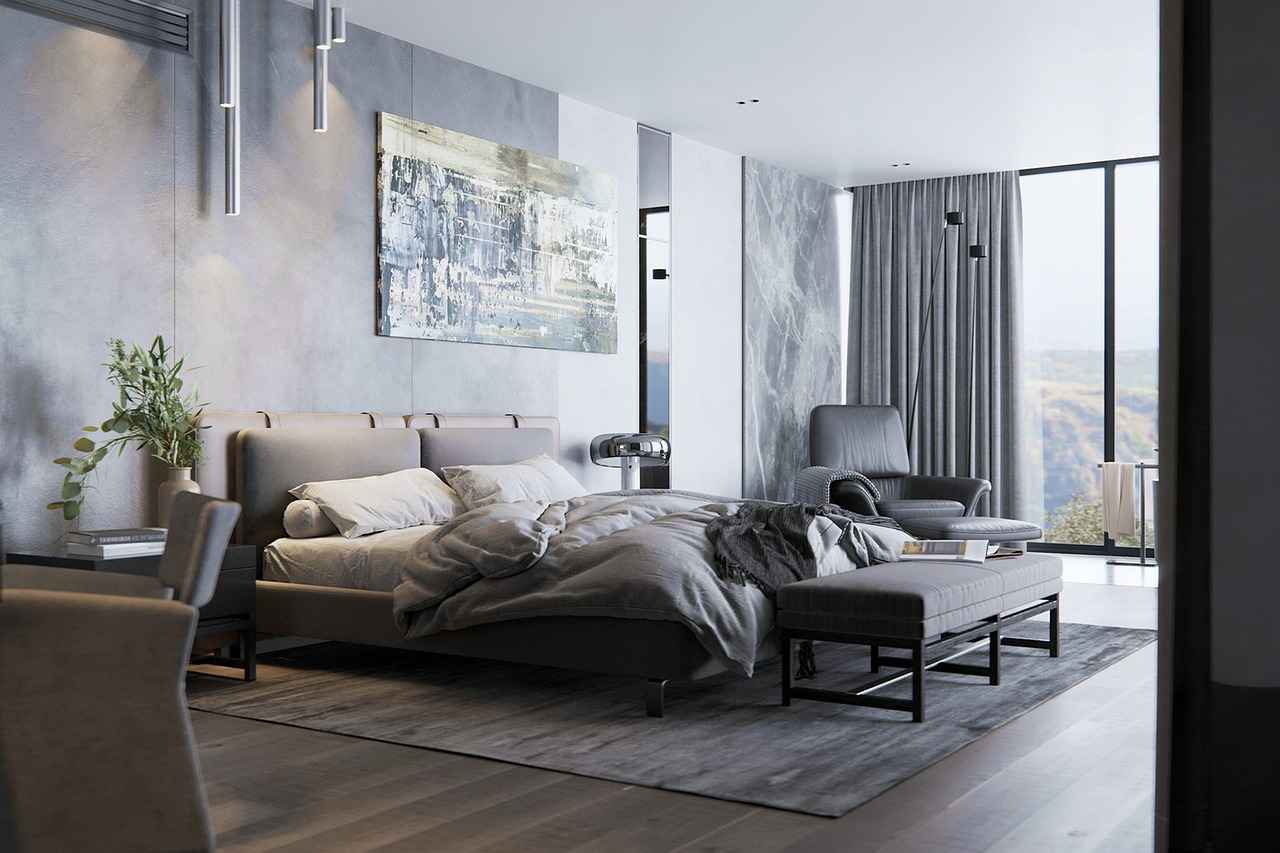
Maintenance Tips for Wooden Beds
Wooden beds are a timeless addition to any bedroom, offering both beauty and functionality. However, to ensure your wooden bed remains in top condition, proper maintenance is essential. This section provides practical tips for cleaning and caring for your wooden furniture, ensuring it retains its stunning appearance for years to come.
One of the most important aspects of maintaining your wooden bed is regular cleaning. Dust and dirt can accumulate, dulling the finish and potentially causing scratches. Here are some effective cleaning techniques:
- Use a Soft Cloth: Always use a soft, lint-free cloth to wipe down your wooden bed. Microfiber cloths are ideal as they trap dust without scratching the surface.
- Avoid Harsh Chemicals: Steer clear of abrasive cleaners and chemicals. Instead, use a mixture of mild soap and water for cleaning. Ensure you wring out the cloth well to avoid excess moisture.
- Regular Dusting: Dust your wooden bed weekly to prevent buildup. This simple task can significantly extend the life of your furniture.
Preventing damage is just as crucial as cleaning. Here are some strategies to protect your wooden bed:
- Use Coasters: Always use coasters under drinks to prevent water rings and stains. This simple habit can save your bed from significant damage.
- Avoid Direct Sunlight: Place your bed away from direct sunlight to prevent fading and warping of the wood. Use curtains or blinds to block harsh sunlight.
- Control Humidity: Wood is sensitive to humidity changes. Maintain a stable indoor climate with a humidifier or dehumidifier to prevent warping and cracking.
In addition to regular cleaning, periodic maintenance is necessary to keep your wooden bed looking its best:
- Reapply Finish: Depending on the finish of your wooden bed, consider reapplying a protective coat every few years. This helps maintain the wood’s luster and protects it from daily wear.
- Inspect for Damage: Regularly check your bed for any signs of damage, such as scratches or loose joints. Addressing these issues early can prevent more significant problems down the line.
- Polish the Wood: Use a high-quality furniture polish to enhance the wood’s natural shine. Choose a polish that is appropriate for the type of finish on your bed.
Even with the best care, scratches and dents may occur. Here’s how to handle them:
- Wood Filler: For deeper scratches, consider using a wood filler that matches the color of your bed. Apply it according to the manufacturer’s instructions and sand it smooth.
- Touch-Up Markers: For minor scratches, touch-up markers can be a quick fix. These markers come in various wood tones and can effectively conceal imperfections.
By following these maintenance tips, you can ensure that your wooden bed remains a beautiful and functional centerpiece in your bedroom. With a little effort and care, your investment in a wooden bed can provide comfort and style for many years to come.
Cleaning Techniques
Maintaining the beauty and longevity of your wooden bed requires regular attention and proper cleaning techniques. Wood is a natural material that can be susceptible to dust, dirt, and moisture, making it essential to establish a routine that protects and preserves its integrity. In this section, we will explore effective cleaning methods that not only keep your wooden bed looking stunning but also ensure its durability over time.
- Dusting Regularly: Dust accumulates quickly on wooden surfaces, so it’s crucial to dust your bed at least once a week. Use a soft, lint-free cloth or a microfiber duster to gently wipe down all surfaces, including the headboard and footboard. This helps prevent the buildup of dust that can scratch the wood over time.
- Using the Right Cleaning Solutions: When cleaning wooden beds, avoid harsh chemicals that can damage the finish. Instead, opt for a mild soap mixed with warm water or a specialized wood cleaner. Test any cleaning solution on a small, inconspicuous area first to ensure it does not alter the wood’s finish.
- Spot Cleaning Stains: For spills or stains, act quickly. Blot the area with a damp cloth, avoiding excessive moisture. For stubborn stains, a mixture of vinegar and water can be effective. Apply it gently with a soft cloth, and always follow up with a dry cloth to absorb any excess moisture.
- Polishing for Shine: To maintain the luster of your wooden bed, consider using a wood polish or conditioner every few months. This not only enhances the appearance but also provides a protective layer against dust and moisture. Be sure to follow the manufacturer’s instructions for application.
- Avoiding Excessive Moisture: Wood can warp or swell when exposed to excessive moisture. Always ensure that any cleaning method you use does not leave the wood overly wet. Additionally, keep your bedroom well-ventilated to reduce humidity levels.
In addition to regular cleaning, consider implementing preventive measures to protect your wooden bed. Use coasters for drinks and avoid placing hot items directly on the surface. By following these cleaning techniques and taking proactive steps, you can ensure that your wooden bed remains a beautiful and functional centerpiece in your bedroom for years to come.
Moreover, understanding the specific type of wood your bed is made from can inform your cleaning strategy. Different woods may require different care techniques, and being aware of these nuances can help you maintain the integrity of your investment effectively.
By establishing a consistent cleaning routine and utilizing the right techniques, you can keep your wooden bed looking as good as new. Remember, a well-maintained wooden bed not only enhances the aesthetic appeal of your bedroom but also contributes to a healthier sleeping environment.
Preventing Damage
When it comes to preserving the beauty and integrity of your wooden bed, preventing scratches and water damage is essential. Over time, exposure to moisture and physical wear can diminish the appearance of your furniture. By implementing a few protective measures, you can ensure that your wooden bed remains a stunning centerpiece in your bedroom for years to come.
Protective Measures Against Scratches
- Use Coasters and Trivets: Always place coasters under drinks and trivets under hot items. This simple step can prevent unsightly rings and heat marks.
- Avoid Sharp Objects: Be cautious with items that may scratch the surface, such as jewelry or sharp-edged décor. Keeping such items away from your wooden bed can significantly reduce the risk of scratches.
- Regular Maintenance: Dust your bed regularly using a soft cloth. This will help avoid the buildup of dirt and debris that can cause scratches over time.
Water Damage Prevention
Water can be particularly damaging to wooden furniture. Here are some strategies to protect your bed:
- Control Humidity Levels: Maintain a stable humidity level in your bedroom. Use a dehumidifier if necessary, as excessive moisture can warp wood and lead to mold growth.
- Immediate Cleanup: If any spills occur, clean them up immediately with a soft cloth. Never allow liquids to sit on the surface, as this can lead to stains and damage.
- Use Protective Finishes: Consider applying a high-quality wood finish or sealant to your bed. This can create a barrier against moisture and enhance the overall durability of the wood.
Additional Tips for Longevity
In addition to the above measures, consider the following tips to maintain the beauty of your wooden bed:
- Rotate Your Mattress: Regularly rotating your mattress can help prevent uneven wear and prolong its life, which in turn helps maintain the bed frame’s integrity.
- Use Soft Bedding: Opt for soft, non-abrasive bedding materials. This can prevent friction and scratches on the wooden surface.
- Regular Inspections: Periodically inspect your wooden bed for any signs of wear or damage. Addressing issues early can prevent more significant problems down the line.
By taking these proactive steps, you can keep your wooden bed looking new and beautiful for many years. Remember, a little care goes a long way in preserving the elegance and functionality of your furniture.
Frequently Asked Questions
- What are the benefits of choosing a wooden bed?
Wooden beds are not just about looks; they offer durability and timeless appeal. They can elevate your bedroom’s style while providing comfort and functionality, making them a great long-term investment.
- Which types of wood are best for bed designs?
Popular choices include oak, pine, and walnut. Each type has unique characteristics; for instance, oak is known for its strength and beautiful grain, while pine is lightweight and affordable.
- How do I maintain my wooden bed?
Regular cleaning is key! Use a soft cloth to wipe down surfaces, and avoid harsh chemicals. To prevent damage, consider using coasters and avoiding water spills.
- What finishes are available for wooden beds?
You can choose from natural finishes that enhance the wood’s grain, or painted finishes for a bold look. Each finish can dramatically change the appearance of your bed.
- How can I accessorize my wooden bed?
Accessorizing is all about creating a cohesive look! Choose bedding colors that complement your wood tone and consider decorative elements like headboards or canopies to elevate the style.
